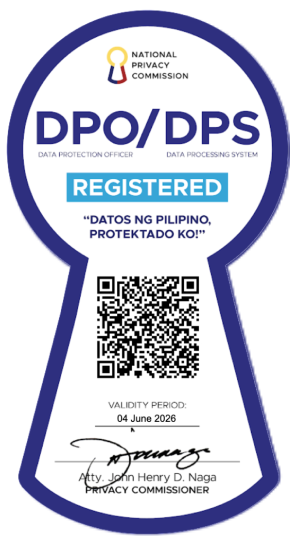
Customer experience isn’t just a buzzword—it’s a proven driver of growth, loyalty, and long-term business value. In a market where customers have endless choices and high expectations, the quality of their experience can determine whether they stay, spend more, and advocate for your brand—or leave for a competitor. Yet, despite recognizing its importance, many companies struggle to transform big-picture CX visions into scalable, actionable plans that consistently deliver measurable results.
In this blog, we walk you through how to create a customer experience strategy—from vision to execution—that fuels meaningful business growth. You’ll learn how to turn customer insights into structured, high-impact initiatives that not only enhance satisfaction but also drive revenue. Whether you’re building your CX approach from scratch or refining an existing one, this guide will help you align vision with execution, ensuring your customer experience strategy becomes a true competitive advantage.
Why CX Is a Growth Driver, Not Just a Support Function
Great customer experiences do more than reduce churn—they directly impact revenue, retention, and referrals. Forrester research shows that companies that excel in CX grow revenues 5.1 times faster than those that lag behind. Similarly, Temkin Group found that a moderate improvement in CX can generate an additional $823 million in revenue over three years for a company earning $1 billion annually.
How CX Impacts Brand Perception and Loyalty
You may think that your brand identity is shaped only by your marketing messages. However, what your customers actually experience can have a significant impact on your overall brand perception. A positive customer experience strengthens brand reputation, builds trust, and fosters emotional loyalty. Loyal customers are far less price-sensitive and more forgiving when issues arise.
The Link Between CX and Higher Conversion or Renewal Rates
A well-executed customer experience strategy increases the likelihood of prospects converting into paying customers and existing customers renewing or upgrading their services. When customers feel understood and valued, they’re more willing to continue doing business with you.
Reduced Acquisition Costs via Customer Advocacy
Happy customers become brand advocates who promote your business for free. Word-of-mouth referrals and online reviews lower your cost per acquisition while bringing in high-quality leads.
But growth-driving CX doesn’t happen by accident—it starts with a clear vision.

Start With a Clear Customer Experience Vision
Your customer experience strategy should reflect your brand promise and what you want customers to feel at every touchpoint. Without a clear vision, CX efforts risk becoming disjointed and inconsistent.
Define Your Ideal Customer Experience (Qualitative and Emotional)
Go beyond functional benefits. Identify the emotional outcomes you want customers to walk away with after every interaction—whether that’s feeling confident, cared for, inspired, or valued.
Align CX Goals With Your Brand’s Mission and Values
A customer experience strategy that conflicts with your core values will fail to resonate. Ensure your CX goals are consistent with your overall brand identity. For instance, a premium brand may focus on exclusivity and personalized service, while a budget brand might emphasize speed and convenience.
Create CX Principles That Guide Frontline Decisions
Document a set of guiding principles so employees know how to act in alignment with your CX vision—even when facing unexpected situations.
Once the vision is clear, the next step is understanding your customers deeply.
Map the Customer Journey (and Identify Pain Points)
A complete understanding of your customer journey is essential to crafting experiences that matter. Having a clear customer journey strategy allows you to visualize the entire path your customers take—from initial awareness to post-purchase engagement.
Identify All Customer Touchpoints Across Channels
When creating your customer experience strategy, make sure to include every point of interaction: website visits, sales calls, onboarding, product usage, customer support, billing, and follow-ups. The more complete your map, the easier it is to spot improvement opportunities.
Pinpoint Friction Areas or Drop-Off Points
Analyze where customers experience delays, confusion, or dissatisfaction. Even small bottlenecks—such as slow response times or unclear instructions—can negatively impact the overall experience.
Use Data (NPS, CSAT, Churn) to Validate Insights
Combine qualitative feedback with quantitative metrics. For example, a spike in churn rates after onboarding might indicate a need for better training materials or more personalized support.
Now, it’s time to turn insights into action.
Build the Right CX Infrastructure
To execute your customer experience strategy for business growth, you need the right mix of people, tools, and processes. Without proper infrastructure, even the best ideas will fall flat.
Empower Cross-Functional CX Ownership (Not Just Customer Service)
Customer experience is everyone’s responsibility—marketing, sales, operations, and product teams all play a role. Establish cross-functional CX committees or liaisons to ensure alignment.
Implement Tech Tools: CRM, Omnichannel Platforms, AI/Chatbots, VoC
A robust CRM system enables seamless data sharing, while omnichannel platforms allow you to meet customers where they are—phone, email, chat, or social media. Voice of the Customer (VoC) programs gather feedback in real time, and AI/chatbots can handle routine queries while escalating complex issues to human agents.
Create SOPs for Handling Inquiries, Escalations, and Feedback
Standardized processes reduce variability and ensure consistent service quality across all touchpoints.
But no customer experience strategy is complete without the ability to measure success.
Define and Track CX Metrics That Matter
You can’t improve what you don’t measure—especially in CX. The right metrics will tell you not only how satisfied your customers are, but also how their satisfaction is impacting your bottom line.
Core CX Metrics: NPS, CSAT, CES, Retention Rate, Churn
- Net Promoter Score (NPS): Measures customer willingness to recommend your brand.
- Customer Satisfaction Score (CSAT): Captures short-term satisfaction after specific interactions.
- Customer Effort Score (CES): Evaluates how easy it is for customers to get their needs met.
- Retention and Churn Rates: Show the long-term effects of your customer experience strategy.
Tie Metrics to Business Goals (LTV, Upsell Rate)
Measuring CX in isolation misses the bigger picture. Link metrics to key financial indicators like customer lifetime value (LTV) and upsell/cross-sell rates to demonstrate ROI.
Use Customer Feedback Loops to Iterate and Improve
Create formal processes for reviewing feedback, implementing changes, and communicating improvements back to customers.
Even with the right metrics, execution can falter without a strong internal culture.
Embed CX Into Your Company Culture
CX excellence requires buy-in from the top down and across every department. Without cultural alignment, customer experience risks becoming a siloed initiative instead of an organizational priority.
Train and Incentivize Teams to Prioritize CX
Regular training ensures employees understand how their roles contribute to the overall customer experience strategy. Incentives like recognition programs or bonuses tied to CX metrics encourage consistent performance.
Encourage Customer-Centric Thinking in Product, Ops, and Support
Product teams should consider customer needs during development, operations should focus on seamless delivery, and support teams should aim to resolve issues efficiently and empathetically.
Recognize and Reward Employees Who Go Above and Beyond for Customers
Make sure to highlight exceptional service stories to inspire other employees to emulate the same behavior.
Create and Execute an Effective Customer Experience Strategy With SuperStaff
A strong customer experience strategy is not just about satisfaction—it’s a strategic lever for sustainable growth. Businesses that outsource to the Philippines have found success boosting their CX efforts and driving further growth and scalability.
By starting with a clear vision, mapping the customer journey, building the right infrastructure, tracking meaningful metrics, and embedding CX into your company culture, you create a foundation that drives revenue, retention, and referrals.
Looking to elevate your customer experience and scale smarter? Contact SuperStaff to learn how our outsourced CX solutions can help you execute a strategy that grows with your business.






